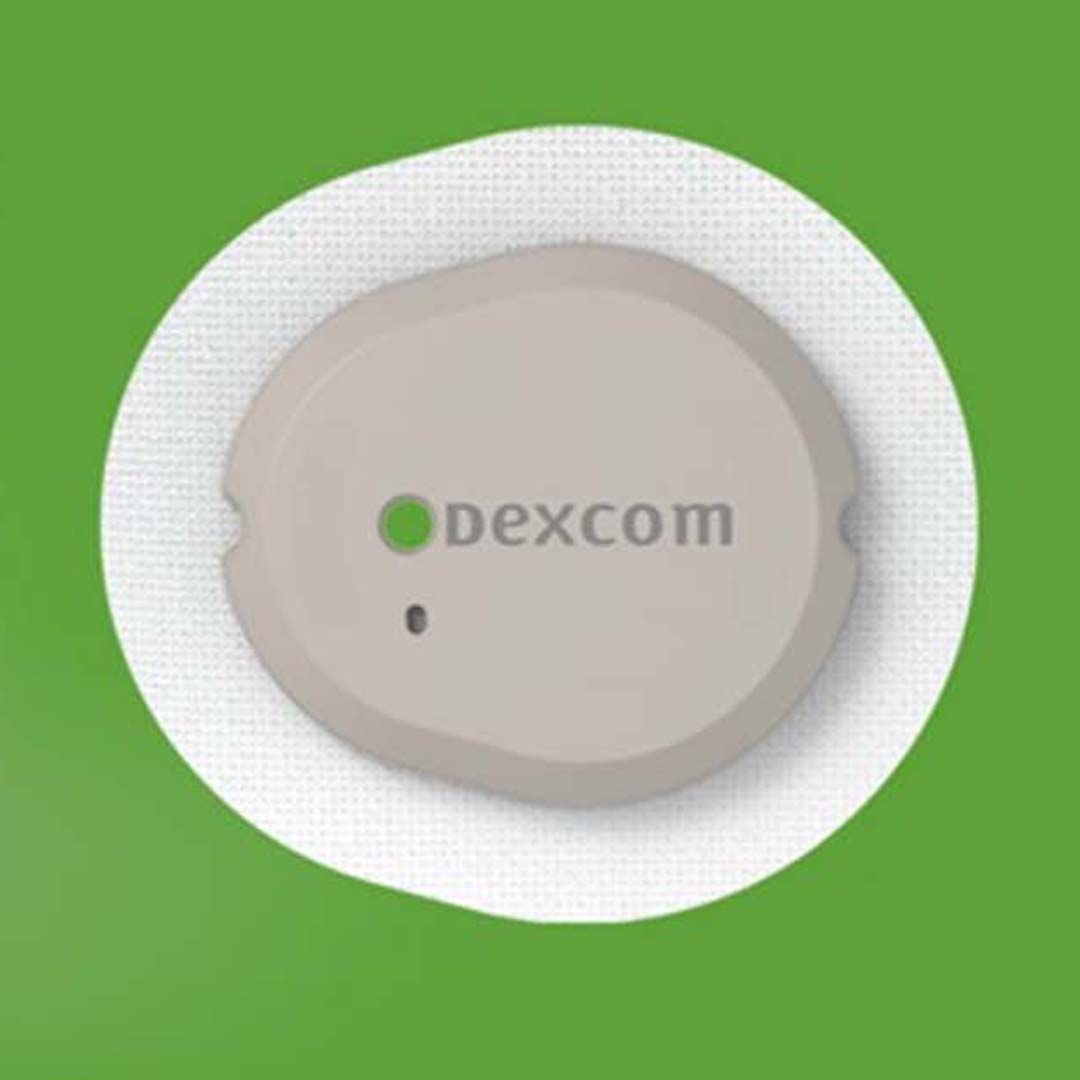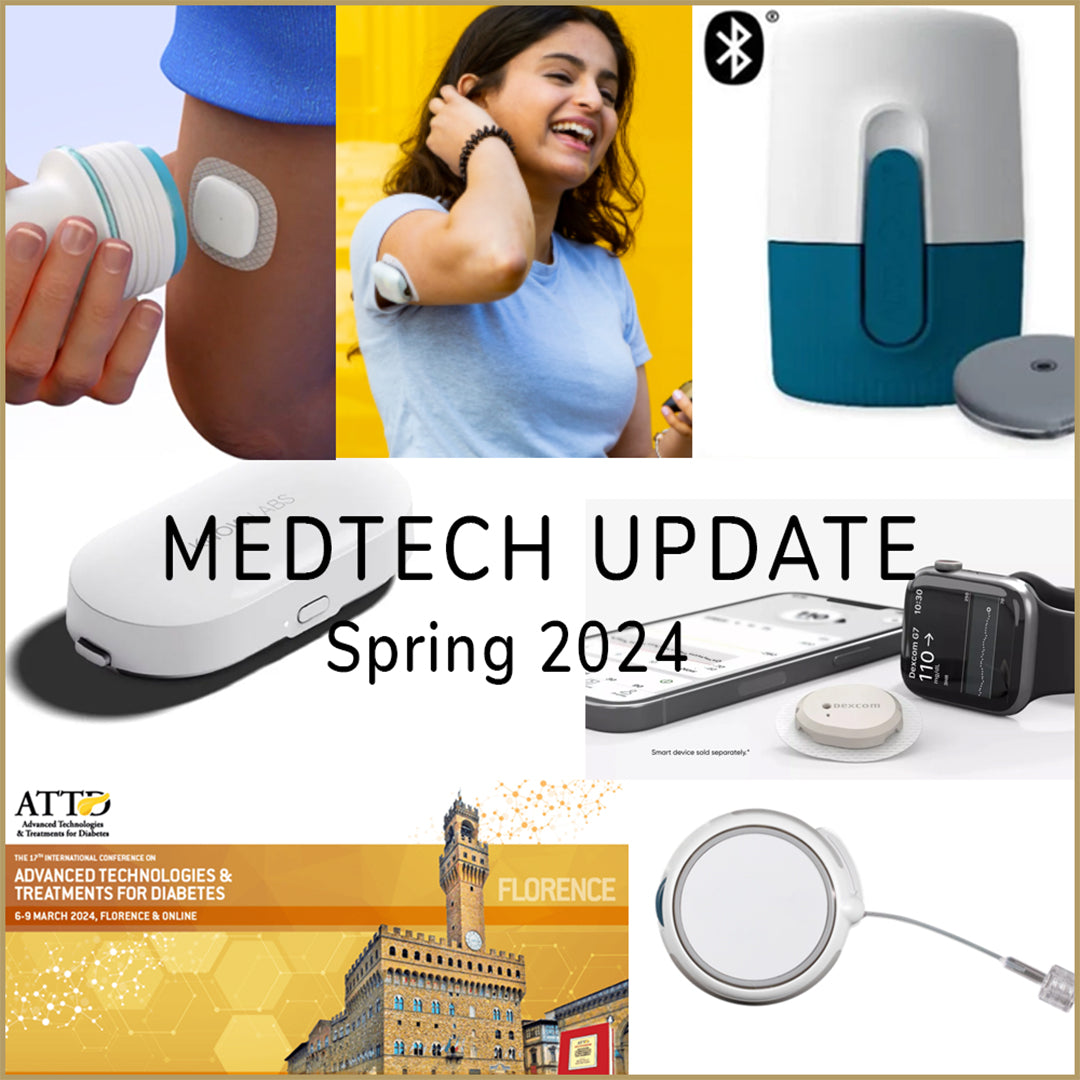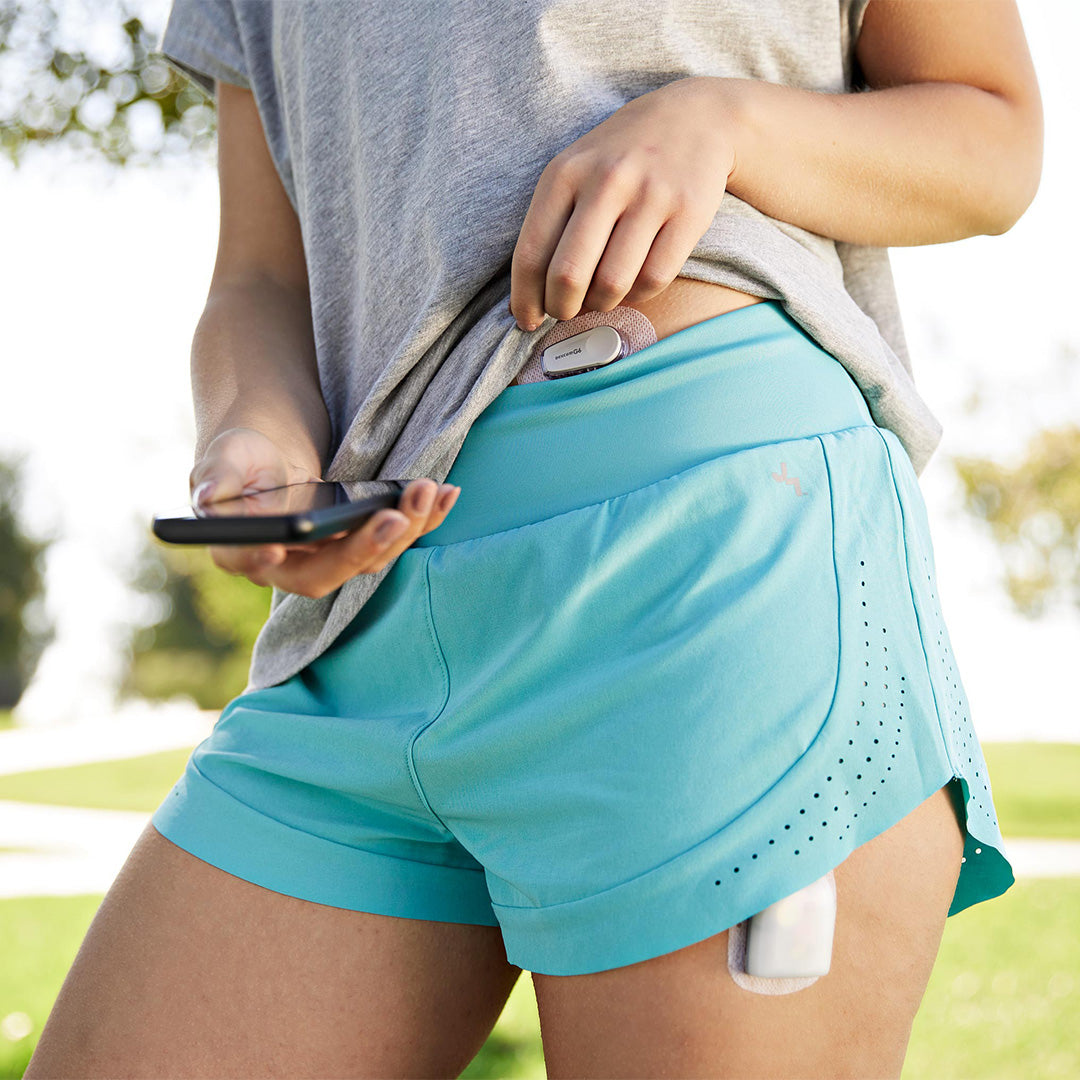
Let’s start by stating that this is not about an app update, it’s about an imposed change that has considerably altered the way many T1Ds make decisions as to how much insulin they inject, how they measure the management of their condition and often how they feel about their diabetes at the end of the day.
With FreeStyle Libre being the standard means to monitor glucose levels, and available to most T1s in England on NHS prescription, it is the CGM now worn here by around 200,000 type 1s. Any change thus has the potential to be far-reaching.
The data derived from a CGM sensor is key to a wearer’s decision of not only how much insulin to inject for meals (bolus), but also whether or not to inject, to make a correction to glucose levels. It can also play a part in the timing of an injection, whether to do an activity or not, and whether to eat something, or not. No doubt there are more too.
A lot rides on a T1 knowing their glucose level. So the move from having to scan to get that information to being able to see levels in real-time was always going to a highly anticipated and much wanted change.
***
The LibreLink update started its roll out on 12th July, and although there was no formal notice from Abbott of the planned update, or what to expect, word had spread in the diabetes community and hopes were high in anticipation of the date.
However, after initially being possible to download, by the morning of 13th July, iPhone users awoke to blank white screens, unable to scan, open the app or reload it. There were numerous reports of waiting for up to 2 hours to get through to Abbott by phone, only to be informed that the iPhone app had been removed from the app store.
It was a “car-crash” as one T1D pointed out 2 days later- as the app still wasn’t back in the App Store. It could certainly be a contender for a case study on “How not to manage an app update”.
Contrary to a comment made by a member of the Lived Experience Group for a prominent diabetes charity, users were angry, scared and frustrated– and that’s those that have aired their views. There are many who don’t, including those who aren’t on social media, don’t use Facebook forums and don’t have any peer support. They are possibly the silent majority of T1Ds and it’s probably unwise to assume they’re happy with this diktat. I use this word as once updated, you can’t go back to the older version of the app.
Peer support to the rescue
Online forums generated considerable traffic from worried Libre 2 iPhone users, and fortunately for many T1Ds, peer support came to the rescue with work-rounds for getting the app to work by reinstalling from iPhone purchases, rather than using the App Store. But, let’s not assume that everyone is on a forum and knows where to go to for diabetes-related support.Our recent poll of sensor users, showed that over 58% of sensor users are not a member of a diabetes group or Forum.
Users who tried contacting GPs or DSNs were often left unsatisfied, as healthcare professionals also weren’t in the know as to what was happening, or how to deal with the fallout of not having access to the App, except to resort to telling callers to go back to ‘old school’ fingerprick tests.
Newly diagnosed T1s seemed particularly affected as they weren’t prepared for switching to fingerpricks or felt uncertain about doing so. In some cases, supplies of glucose strips were low, or out of date and urgent prescriptions were required.
|
Without the app working, my 80-year-old mother, who lives independently, without carers, and has had type 1 for a few years, did a fingerprick test and adjusted her insulin on this basis. It was only when she was going low that we realised the strips were out-of-date. Fortunately, this didn’t result in a medical episode, but it so easily could have… |
Support from Abbott was extremely poor and they seemed ill-prepared with no back-up or contingency plan. This left more than a few users asking how to upgrade to Libre 3 or switch to Dexcom. Many started to use Shuggah after being directed to this unofficial app by forum users. Abbott’s safety notifications and guidance issued 3 days after the update roll out, is unlikely to do little to repair the damage done by this “botched” update.
Users did report feelings of being worried by not having their data, and some were nervous of possible consequences such as if they could sleep safely without their alarms and this wasn’t just themselves but for those carers that follow T1s, it enhanced concerns about their vulnerability.
Loss of features
The update removes one of the most popular features and a way that the app gamified its usage; the time in range is no longer shown on the app’s main screen. No more hunting for unicorns – that magical, if not somewhat elusive, 100% in range score! It’s popularity is summed up by one user who commented “how on EARTH are you supposed to know if you’re keeping on top of it all now?”
Another feature that was ‘lost’ by the change to the app was the use of the log book which is now redundant, although it will log food, exercise and insulin doses. Many T1s have relied on this function and if you’ve had diabetes a long time, then logging levels is very much part of your daily ritual of management. There is now quite limited data available on the app with more detailed information on LibreView, albeit differently presented. Understanding how to use this data is likely to need further training or explanation and I hope that DSNs or even Abbott will pick up the baton here.
The way in which the app update was imposed also meant that users lost the data held in the app relating to time in range and log books – this is data that many T1Ds used on a daily basis and highly valued, some using it as motivation and a measure of their day, week or longer.
Personal experience
Putting aside the issues of getting onboard with the updated app, I would describe my first experience of the new app as mesmerising. I kept the home screen of the app open on the work desk next to me so I could see the numbers change, or not, as I went about my daily activities. I instantly loved the insights and unlike my experience with a Dexcom, where I had to wait 5 minutes for updates, this felt very proactive. I was able to modify my management and make better decisions almost instantly. It has translated the way I look at trends and so far, I haven’t needed alarms as I am able to take action ahead of reaching the lows and highs set to alarm.
I did wonder if I may end up over-correcting by trying to flatten the line – it’s easy to forget that despite social media postings suggesting otherwise, that’s not the goal!
International consensus is that 70% Time In Range is the appropriate target. In other words, keep in the green zone part of the chart!
Having real-time CGM also feels reassuring as if someone is looking over their shoulder at me – in a good way. I’m no longer scanning and looking to see the result as if peeking with my eyes squinting from under my duvet.
You actually don’t need to worry about the numbers, the focus is on keeping within range and I certainly feel like it’s a win for my mental health! It’s another step in making diabetes fit in with our lives rather than being enslaved to managing the condition.
Initial reports from other users are also positive, with the change from flash to real-time CGM being described as “amazing” and “I really like it so far”.
After helping one our subscriber’s update their phone they told us “I have the updated app which is fantastic!!Wow talk about clever, it will really assist the day to day management of diabetes, especially in my case doing high intensity exercise.”
For my personal management, I am sceptical about the need to follow the current momentum towards hybrid closed loop (HCL), and my initial experience of real-time CGM does, for me, indicate that my management can be significantly improved without wiring myself up to further medtech. I just need to see if it’s sustainable and whether in fact it’s good enough.
Abbott’s handling of the issues
Three particular aspects stand out from users’ comments about Abbott’s handling of the problems: additional costs and inconvenience; the lack of support and safety concerns.
- At first, a sizeable number of T1Ds assumed it was their fault and changed their sensor in the hope this would rectify their problem. Some then needed to purchase new sensors - to them it was an emergency. Others needed to get urgent prescriptions for glucose strips, again some T1Ds paid for these themselves.
- The support available from Abbott has been described as “a nightmare“, “shoddy” “major screw up”, “appalling service” and “Ithought it was awful that they had not put information on their website”.
- Many users commented on the safety of the app as being used as a medical device, with comments such as “minimal testing”, “should have strict compliance rules” and “It does beg the question what kind of safety checks were done before the app was released.”
Abbott have now issued an Urgent Field Safety Notice and disclosed that the matter has been referred to the MHRA (Medicines & Healthcare Regulatory Authority).
The matter is unlikely to rest there as the problems have caused mistrust and damaged the FreeStyle Libre brand. As one forum user pointed out, “I guess that Abbott think the issue is now completely solved. Personally, I am not entirely happy with the way Abbott has handled all of this”.
Medtech’s approach to PWD
The problems with this app have not only highlighted our growing dependency on medtech but also the authoritive role of large medtech corporations in our day-to-day management. The poor level of service afforded users and lack of information shows a lack of respect for T1s and serves as a reminder of the paternalistic approach taken towards those with diabetes, dating back to the discovery of insulin.
With hybrid closed loops due to be rolled out in the UK later this year, I know I’m not alone in my concern around what happens when things go wrong with medtech and whether we have invested enough effort into thinking through the consequences. We need to be able to trust our medical devices and with this recent experience, the trust in Freestyle Libre has been damaged.
With that said, Abbott still has the potential to really support users if it looks to address the frustrations that many of us have and include key features in future updates. Top of the list must be the ability to link directly to a smartwatch.
In our poll of 681 sensor users, 85% said getting glucose levels on a smartwatch was the feature they most wanted!
Another feature, and one reason why T1s are still using the unofficial Shuggah app for glucose levels, is to see their reading on the home screen. It would be great for Abbott to enable this functionality, but there’s no word on this yet.
Although the poor roll out caused considerable anxiety and distress to many T1Ds, the app itself is a big step forward for diabetes self-management and hope that Abbott will now listen to users experiences and take onboard their opinions for future development.
***
If you have any comments on your experience of the app update or any suggestions to help others please email these tohello@lovemylibre.co.uk
Libre Life reaches over 3,000 subscribers directly through email, with over 80% of these based in the UK. We are independent of medtech companies and do not have any paid partnerships or affiliations.
***
Support if you still have issues
The Libre 2 app in now back in the iPhone App Store but if you are experiencing problems please refer to the following resources from Abbott.
YouTube video: https://www.youtube.com/watch?v=LfIbDA8ciSg
Further information and FAQs about the app update: https://www.freestyle.abbott/uk-en/freestyle-librelink-update.html
***
Disclaimer
Blogs and publications on this website are independent of any involvement by medtech companies or diabetes related charities. To ensure there is no bias, we do not accept any products, freebies or other material from any medtech provider. All materials are copyright ©️Love My Libre Ltd.
Love My Libre is not associated or affiliated with Abbott or FreeStyle Libre. Content here and on our website www.lovemylibre.com does not constitute medical advice or replace the relationship between you and healthcare professionals nor the advice you receive from them.
The author of this blog has type 1 diabetes and uses the FreeStyle Libre 2 which is provided on NHS prescription.
FreeStyle Libre is a registered trademarks of Abbott Diabetes Care Inc.




